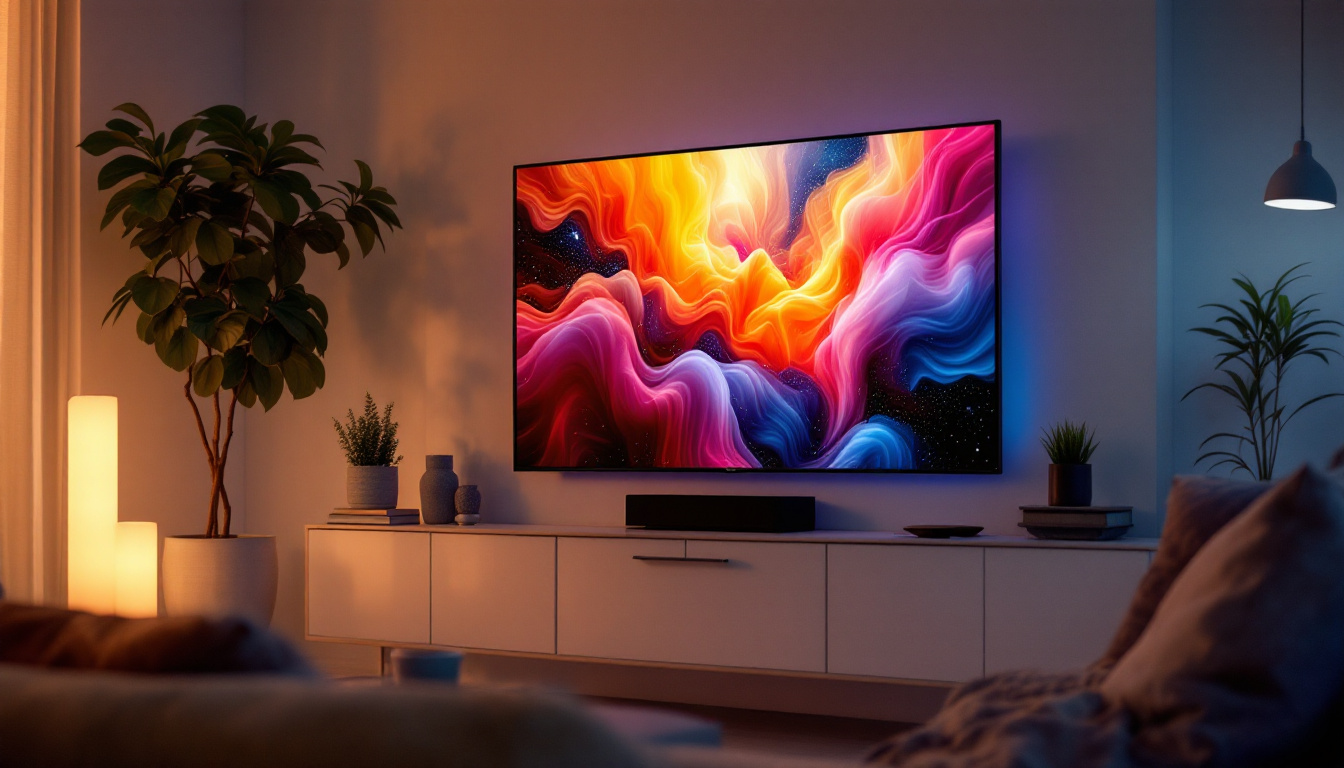Is LCD Better Than LED: LED Display Explained
In the world of display technology, the terms LCD and LED are often used interchangeably, leading to confusion among consumers. While both technologies serve the same purpose of delivering visual content, they operate on different principles and have distinct characteristics. This article aims to dissect the differences between LCD and LED displays, helping readers understand which technology might be better suited for their needs.
Understanding LCD Technology
Liquid Crystal Display (LCD) technology has been a staple in the display market for decades. It utilizes liquid crystals sandwiched between two layers of glass or plastic. When an electric current is applied, these crystals align to allow light to pass through, creating images on the screen. However, LCDs require a backlight to illuminate the display, as the liquid crystals themselves do not emit light. This fundamental characteristic of LCDs has led to their widespread adoption in various devices, from smartphones to large television screens, due to their ability to produce sharp images and vibrant colors.
Moreover, the technology behind LCDs has evolved over the years, leading to the emergence of various types such as IPS (In-Plane Switching) and TN (Twisted Nematic) panels. IPS panels are known for their superior color accuracy and wider viewing angles, making them ideal for professional graphic work and multimedia consumption. In contrast, TN panels are often favored in gaming environments due to their faster response times, although they may sacrifice some color fidelity and viewing angles.
The Backlighting Mechanism
In traditional LCD displays, the backlight is typically provided by fluorescent lamps, which can result in uneven lighting and limited contrast ratios. However, advancements in technology have led to the development of LED-backlit LCDs, which use light-emitting diodes to provide illumination. This innovation has significantly improved the overall performance of LCD displays, enhancing brightness, color accuracy, and energy efficiency. LED backlighting also allows for features like local dimming, where specific areas of the screen can be dimmed or brightened independently, resulting in deeper blacks and more dynamic contrast in images.
Additionally, the introduction of edge-lit LED technology has enabled manufacturers to create thinner and lighter displays, as the LEDs are positioned along the edges of the screen rather than behind it. This design not only contributes to a sleeker aesthetic but also facilitates the production of ultra-thin televisions that can easily fit into modern living spaces. As a result, consumers are increasingly drawn to these advanced LCD options for their home entertainment systems, appreciating both the visual quality and the space-saving benefits.
Advantages of LCD Displays
One of the primary advantages of LCD displays is their affordability. They are generally less expensive to produce than LED displays, making them a popular choice for budget-conscious consumers. Additionally, LCDs can offer excellent color reproduction and are available in a variety of sizes, making them versatile for different applications, from televisions to computer monitors. Their lightweight and compact design also makes them easier to transport and mount, which is particularly beneficial for portable devices like laptops and tablets.
Furthermore, LCD technology has made significant strides in energy efficiency, with many modern displays designed to consume less power than their predecessors. This not only reduces electricity costs for consumers but also aligns with growing environmental concerns regarding energy consumption and sustainability. As manufacturers continue to innovate, we can expect further enhancements in LCD technology, including improved refresh rates and resolutions, which will continue to cater to the evolving needs of both casual users and professionals alike.
Exploring LED Technology
Light Emitting Diode (LED) technology, on the other hand, refers to displays that use LEDs as their primary source of light. Unlike traditional LCDs, which rely on backlighting, LED displays can be constructed using individual diodes that emit light directly. This allows for greater control over brightness and color, resulting in a more vibrant and dynamic viewing experience. The advancement in LED technology has revolutionized not only consumer electronics but also various industries, from automotive lighting to architectural designs, showcasing its versatility and adaptability.
Types of LED Displays
There are two main types of LED displays: edge-lit and full-array. Edge-lit LED displays have LEDs positioned around the edges of the screen, allowing for a thinner design. However, this can sometimes lead to uneven lighting. Full-array LED displays, on the other hand, have a grid of LEDs behind the screen, providing more uniform illumination and better contrast ratios. Additionally, some modern displays utilize local dimming technology, which enhances the contrast even further by dimming specific sections of the screen based on the content being displayed, thus improving the overall picture quality.
Benefits of LED Displays
LED displays are known for their superior brightness and contrast levels compared to traditional LCDs. This makes them ideal for viewing in well-lit environments, where reflections and glare can be problematic. Furthermore, LED technology is more energy-efficient, which can lead to lower electricity bills and a reduced carbon footprint. The longevity of LED displays is another significant advantage; they typically last much longer than their LCD counterparts, often exceeding 50,000 hours of use. This durability not only translates into cost savings over time but also reduces the frequency of replacements, making LED displays a more sustainable choice for consumers and businesses alike.
Moreover, the color accuracy and range offered by LED technology have made it a preferred choice for professionals in fields such as graphic design and photography. With advancements in color calibration and the introduction of technologies like Quantum Dot, LED displays can now reproduce a wider spectrum of colors, ensuring that what you see on the screen is as true to life as possible. This capability is particularly beneficial for tasks that require precise color matching, such as video editing and digital art creation, where every hue and shade matters significantly.
Comparing LCD and LED Displays
When it comes to comparing LCD and LED displays, several factors come into play. Understanding the nuances of each technology can help consumers make informed decisions based on their specific needs and preferences.
Picture Quality
Picture quality is often the most critical factor for consumers. LED displays typically offer better contrast ratios and more vibrant colors due to their ability to control individual pixels. This results in deeper blacks and brighter whites, enhancing the overall viewing experience. In contrast, traditional LCDs may struggle with contrast, particularly in darker scenes.
Energy Efficiency
Energy efficiency is another key consideration. LED displays consume less power than traditional LCDs, making them a more environmentally friendly option. This efficiency is particularly advantageous for large displays or those used for extended periods, as it can lead to significant savings over time.
Cost Considerations
Cost is often a deciding factor for many consumers. While LED displays tend to be more expensive upfront, their longevity and energy efficiency can offset the initial investment. Conversely, LCDs are generally more affordable, making them an attractive option for those on a tight budget. Ultimately, the choice between the two may come down to individual financial priorities.
Applications of LCD and LED Displays
Both LCD and LED displays have found their niche in various applications, from consumer electronics to professional settings. Understanding where each technology excels can help consumers choose the right display for their needs.
Consumer Electronics
In the realm of consumer electronics, LCDs are commonly found in budget televisions and monitors. They offer decent performance for everyday use, such as browsing the internet, watching movies, or playing video games. LED displays, however, have become the standard for high-end televisions, providing superior picture quality and enhanced features such as smart technology integration.
Professional Use Cases
In professional settings, the choice between LCD and LED displays often depends on the specific requirements of the task. For graphic design, video editing, and other color-critical work, LED displays are preferred due to their superior color accuracy and contrast. On the other hand, LCDs may still be suitable for office environments where high-end graphics are not a priority.
Future of Display Technology
The display technology landscape is constantly evolving, with new advancements emerging regularly. As consumers become more discerning about picture quality and energy efficiency, manufacturers are innovating to meet these demands.
Emerging Technologies
One of the most exciting developments in display technology is the rise of OLED (Organic Light Emitting Diode) displays. Unlike traditional LED displays, OLEDs do not require a backlight, allowing for even greater contrast ratios and color accuracy. As OLED technology becomes more accessible, it may challenge both LCD and LED displays in the market.
Smart Technology Integration
Another trend is the integration of smart technology into displays. Many modern LED televisions come equipped with built-in streaming services, voice control, and smart home compatibility. This trend is likely to continue, as consumers seek more functionality from their display devices.
Conclusion: Which is Better?
Determining whether LCD or LED is better ultimately depends on individual needs and preferences. For those seeking affordability and decent performance, LCD displays may be the way to go. However, for consumers who prioritize picture quality, brightness, and energy efficiency, LED displays are likely the better choice.
As technology continues to advance, the line between these two display types may blur further. Consumers should stay informed about the latest developments to ensure they make the best choice for their viewing needs. Ultimately, both LCD and LED technologies have their unique advantages, and understanding these can lead to a more satisfying viewing experience.
Discover the Future of Visual Displays with LumenMatrix
As you consider the best display technology for your needs, remember that LED displays are at the forefront of combining superior picture quality with energy efficiency. LumenMatrix, a leader in LED display innovation, offers a comprehensive range of solutions tailored to bring your visual communications to life. From captivating Indoor and Outdoor LED Wall Displays to dynamic Vehicle and Sports LED Displays, each product is designed to enhance brand visibility and create immersive experiences. Embrace the future with LumenMatrix’s Custom, All-in-One, and Transparent LED Displays that revolutionize the way businesses engage with audiences. Check out LumenMatrix LED Display Solutions today and see how they can empower your message with impact and clarity.































